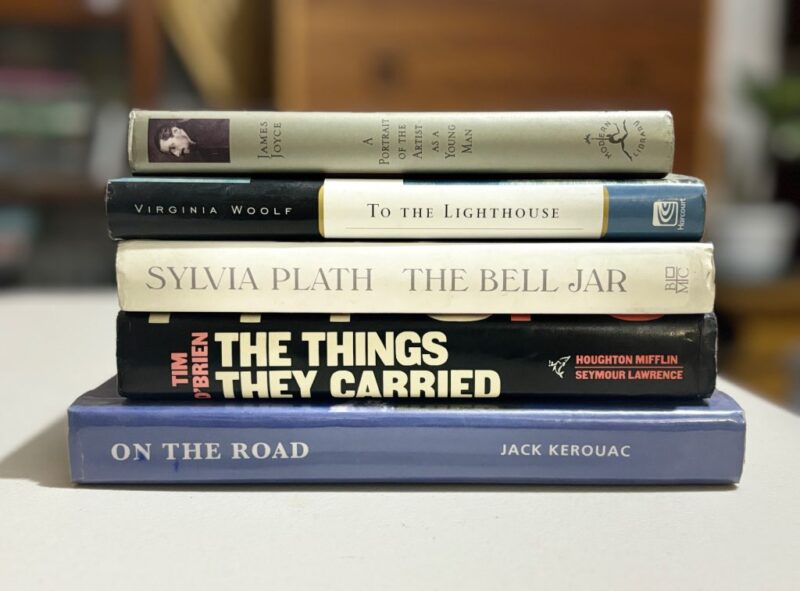Monsieur Pain (1999)
Monsieur Pain is a gentle Frenchman, lung-damaged in the first world war, who makes a small living as a mesmerist in mid-1930s Paris. He was asked by Madame Reynaud to treat her husband, Peruvian poet Cesar Vallejo, of an undiagnosed illness that makes him unable to stop hiccuping. Though Pain accepted Madame Reynaud’s request to help her husband recover, he is pursued by two enigmatic Spaniards who bribe him to not treat Vallejo. Pain’s access to the hospital is then restricted, and Madame Reynaud inexplicably vanishes.
In spite of the fact that “Monsieur Pain” is not one of Roberto Bolaño’s most important works, it still offers a lot of pleasure. In this oddly sensitive noir thriller, Bolaño takes us on a journey through a bizarre, dark, and hilarious underworld. The novel has a moral and political urgency that obliges the reader to accept its noir banalities. Its tortuous method of approaching the unspeakable reveals the face of evil without glamorizing it, as popular literature so often does.
The Insufferable Gaucho (El Gaucho Insufrible, 2003)
Five stories and two essays comprise “The Insufferable Gaucho,” a brief yet fascinating book by Roberto Bolaño. Reading each piece shows how rewarding such an experience is to explore the myriad ways in which fiction can be constructed. The stories include a “police rat” that is told from the point of view of an actual rat in the sewer, “two Catholic tales” written as if from a verse in the Bible, and a lawyer who tries to live like a gaucho—the book’s title story and is one of the strongest in the collection.
Bolaño’s popularity in the English-speaking world is mostly based on translations published after his death in 2003 and this book is his last work in Spanish which has been translated into English in 2010. The Chilean author began his literary career as a poet, which is evident in his ability to recognize the tiniest, seemingly trivial moment or detail that becomes spectacular in context.
The Return (Llamadas Telefonicas,1997 and Putas Asesinas, 2001)
There is a lot of focus on the interconnectedness between the rebirth of the body and death in Roberto Bolaño’s short story collection “The Return.” Each story makes the reader a voyeur, snatching glimpses of people’s tormented lives and the ghosts that inhabit their dreams. In the title story, a young party animal collapses and dies on the dance floor of a Parisian disco, only to find that odd happenings are afoot as his soul departs.
Crime, sexual depravity, exile, and the meta-literary all feature in these stories by the late Chilean author. Bolaño’s short stories have the ability to perform the work of a novel because they are wide-ranging, intriguing, and adventurous. His characters are the product of a mind that is so complex and yet unaffected by the ever-tightening social expectations of modern literature.
The Secret of Evil (El Secreto del Mal, 2007)
An anthology of short stories discovered on Roberto Bolaño’s laptop after his death, “The Secret of Evil” includes all of Bolaño’s work that he was working on just prior to his death in 2003. The files on his hard drive were used to put together this collection of 19 pieces. This small collection is like flipping through a scrapbook for the enthusiast.
Suspenseful tales that leave you gasping for air are what these stories are all about. Bolaño prefers to tell stories in short, slicing-and-dicing chunks of time rather than the more traditional method of conflict and resolution. However, many of the pieces are clearly incomplete, with the author having barely begun any of them. Allegory, gangsters, zombies, and more are just some of the themes explored in this collection.
The Third Reich (El Tercer Reich, 2010)
As a kid, Udo Berger spent his summers in a little village on the Costa Brava, where he now lives with his partner, Ingeborg. Charly, one of their friends, goes windsurfing one day and never returns. When Ingeborg departs and Uno decides to stay in the hotel until Charly’s body washes ashore, he plays a wargame called Third Reich on the beach and flirts with the hotel manager.
Udo is clearly an untrustworthy narrator, but Bolaño avoids making him go insane. As a sort of tentative gothic, The Third Reich is a book filled with sinister dreams, mirrors that don’t give Udo any reflection, voices that come from everywhere and nowhere, and a silent zone that quietly establishes itself in the middle of the room. This novel is a mesmerizing tale: sleek, linear, easily digested, beautifully translated by Natasha Wimmer, the same translator of Bolaño’s award-winning books 2666 and The Savage Detectives.
The Savage Detectives (Los Detectives Salvajes, 1998)
Roberto Bolaño’s The Savage Detectives is a highly original masterpiece focusing on the search for a missing poet. Arturo Belano and Ulises Lima, two quasi-legendary figures in this novel, drive away from Mexico City on New Year’s Eve 1975 in a borrowed white Impala to find the long-lost poet Cesárea Tinajero. It’s a quest story, but it’s also a love letter to the Latin American literary scene, particularly that of Mexico.
The novel follows Belano and Lima as seen by those who cross their paths in Central America, Europe, Israel, and West Africa. Several narrators tell the story of Belano and Lima’s lives in a variety of ways in the middle section, each offering a unique perspective on the two characters while Juan Garcia Madero’s journal entries from late 1975 and 1976 form the basis of the novel’s first and final sections.
Bolaño explores the relationship between literature and violence in a world where national borders are porous and death lurks in the shadow of the avant-garde. Artfully and cleverly crafted, this book is a refreshing change of pace for most readers who will benefit immensely if they give it another run with a second reading.
AUTHOR PROFILE
Roberto Bolaño was one of the most influential South American writers of the 21st century who was born in Santiago, Chile, and later lived in Mexico City, Paris, and Spain. When it comes to the literary genres of fiction and non-fiction, he is one of Chile’s best-known writers, having won numerous awards and accolades for his work. While living in Mexico in the 1970s, he formed a group called infrarealism with other avant-garde writers and poets, which he called “infrarealists.”
Bolaño’s novel Los detectives salvajes (The Savage Detectives) won the Rómulo Gallegos Prize in 1999, and his novel 2666, described by board member Marcela Valdes as “a work so rich and dazzling that it will surely draw readers and scholars for ages,” won the National Book Critics Circle Award for Fiction in 2008.
His writing career took off after learning he had an incurable liver disease at the age of 38. Even though he was a prolific poet throughout his life, his novels didn’t come out until the 1990s. A liver transplant failed to save his life on July 15, 2003 while he was in a Spanish town called Blanes near Gerona. After his death, his books began to be widely read in English translations in Europe and Latin America.
Further Reading
Beyond Bolaño and Beyond by Matt Bucher, Full Stop
Tracking the True Roberto Bolaño by Scott Esposito, Barnes & Noble
Vagabonds: Roberto Bolaño and his fractured masterpiece by Daniel Zalewski, The New Yorker
Roberto Bolaño on Writing, Reading, Literature, and More, bigother.com




